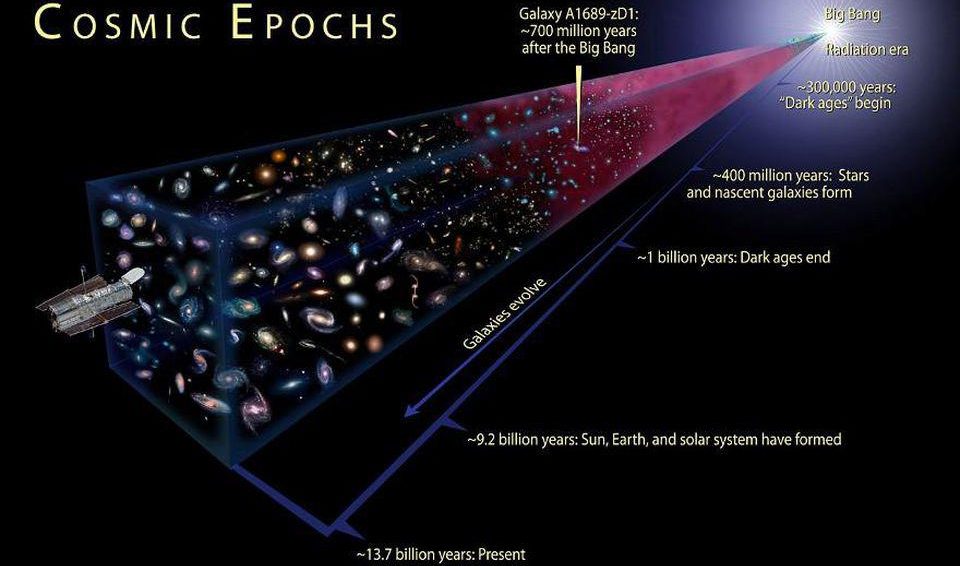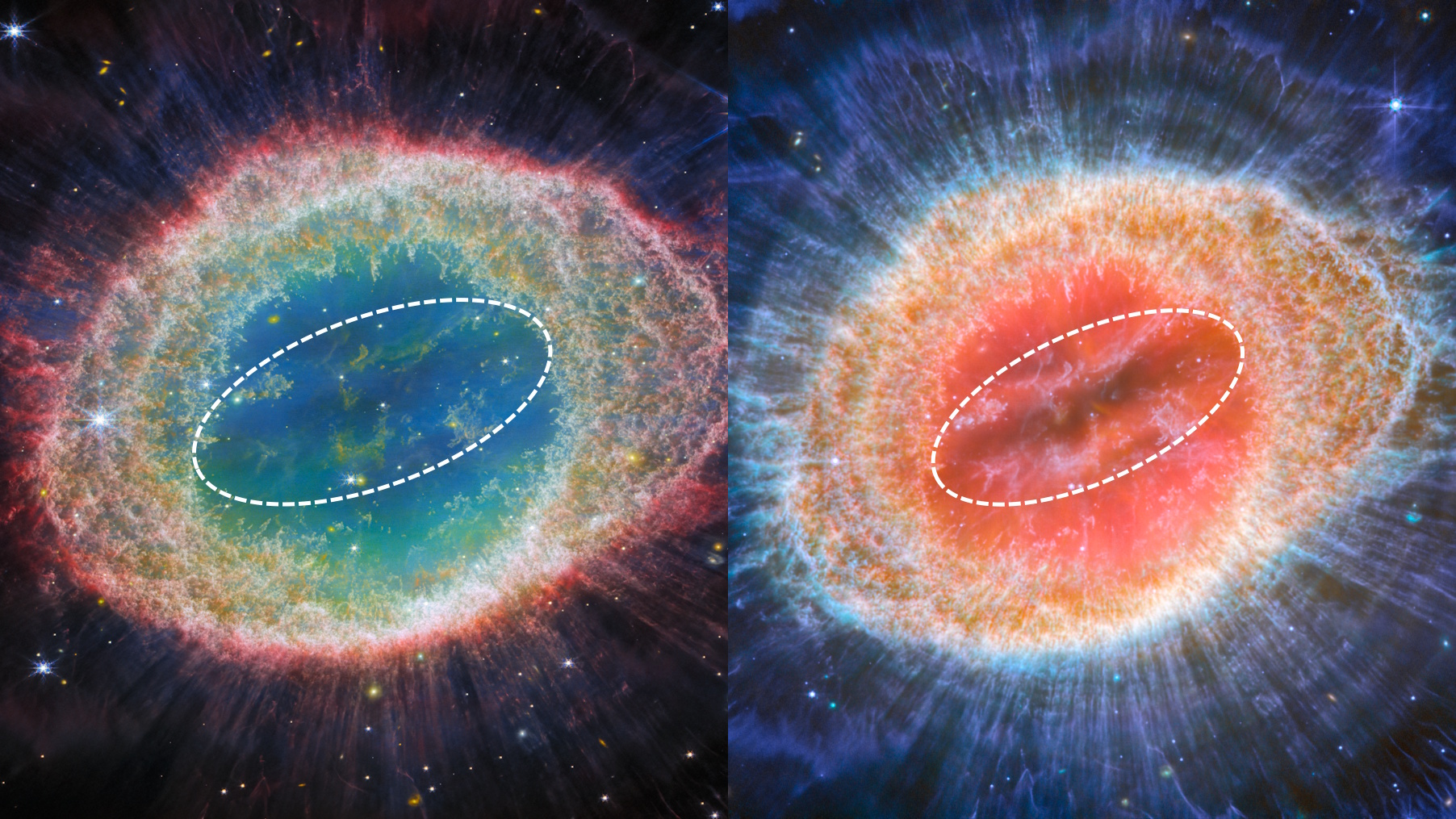Throwback Thursday: The Camera that changed the Universe
As the Hubble Space Telescope nears its 25th anniversary, it never stops amazing us.
“That I learned even as a three year-old that I see this world that is really a mess and I learned to say, ‘This is not me. I am not the one that is messed up. It is out there.’” –Story Musgrave
The Hubble Space Telescope took its first images in 1990, but it was really starting in 1993 — after the first servicing mission — that the science really started to skyrocket.
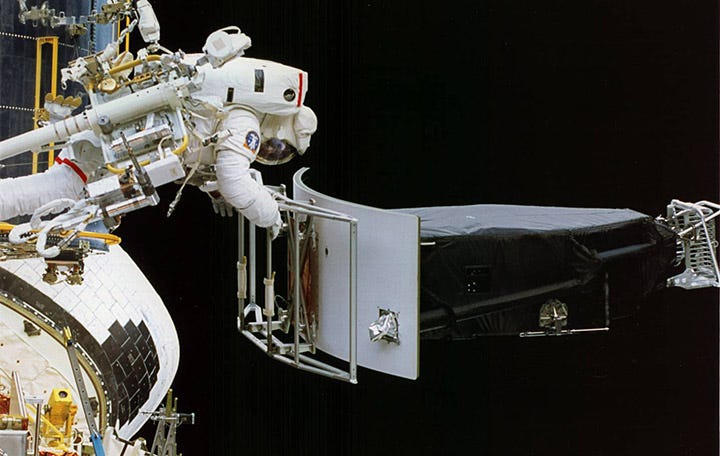
That, of course and the awe that it brought us back. Not only did we fix the initial problem of the primary mirror and spherical aberration, but we were able to upgrade the main camera.
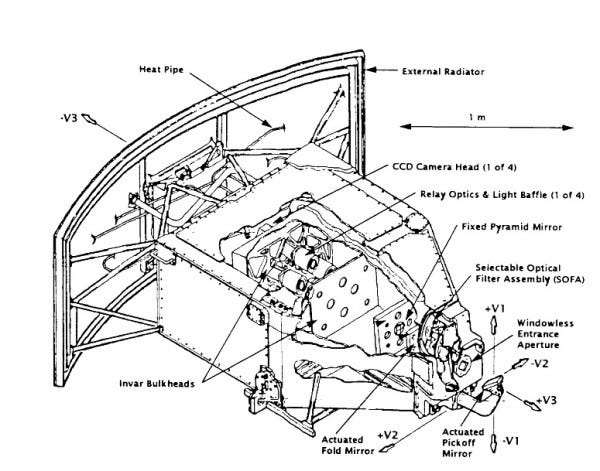
What we installed — the Wide Field Planetary Camera 2 (WFPC2) — was without a doubt the camera that changed the Universe. Just looking at what the difference was before and after the first servicing mission!
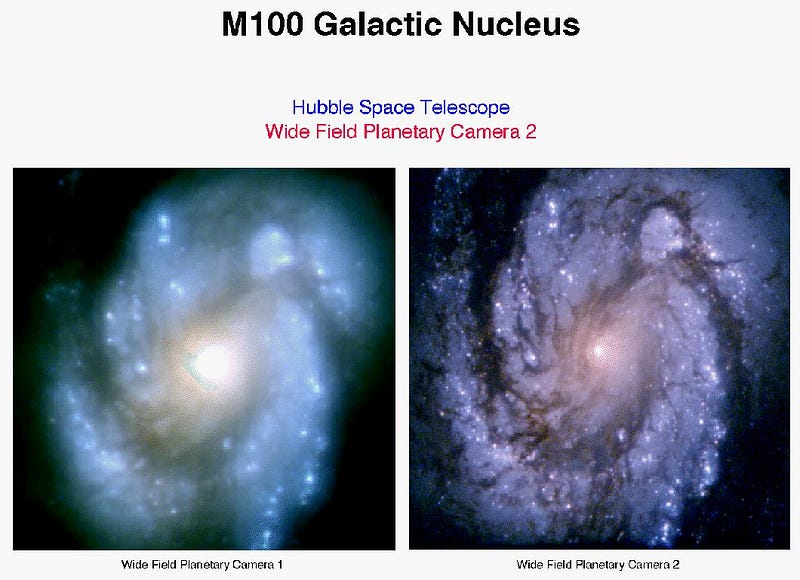
From 1993 to 2009, WFPC2 was the main, workhorse camera on the Hubble Space Telescope, and took a myriad of iconic images over its lifetime. But five of them stand out, in particular, as images that changed our Universe forever.
1.) The original Hubble Deep Field. When you look up into the night sky, in some places there are stars, and in other places is just a black, empty abyss. You can see more stars with binoculars than your naked eye, and more with a telescope than with binoculars. But, at some point, you will have seen it all.
Well, in 1995, they decided to do an interesting experiment with the Hubble Space Telescope. Let’s take a blank patch of sky, one with practically no stars in it, one with no known galaxies, clusters, or — pretty much — anything of interest in it. And let’s point our telescope at it, for days, and let’s see what shows up.
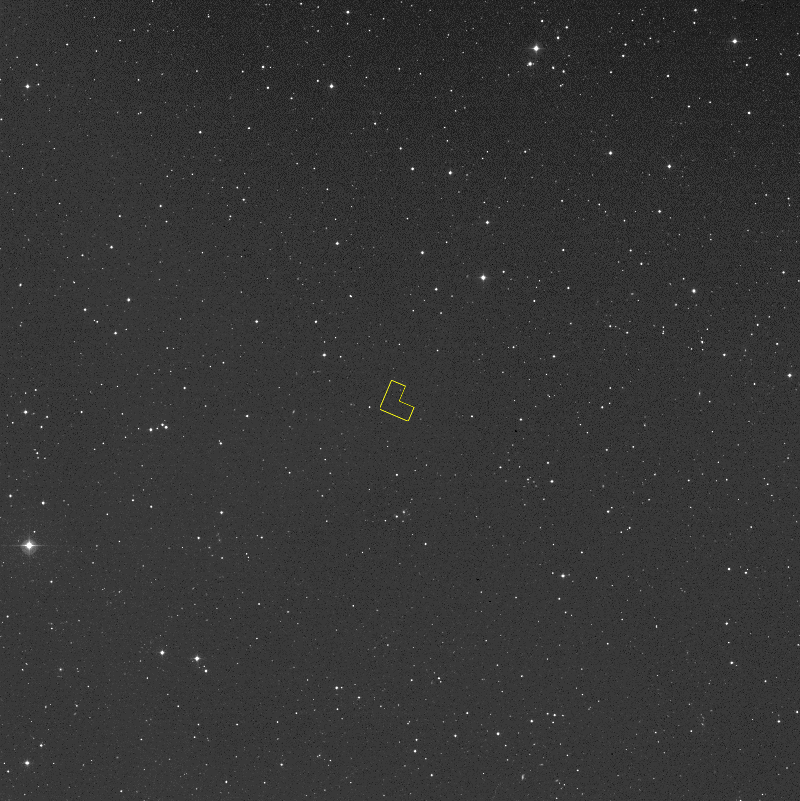
This image is only one degree on each side, or only 0.005% of the night sky. So you can appreciate just how miniscule this area is: the night sky is about 20,000 square degrees, while that little area is less than 0.002 square degrees! There are five faint stars in this field, and — before Hubble — they were the only things we knew of in this area.
Over the span of 10 days, WFPC2 took 342 images of this abyss, staring at this tiny, black patch of sky where nothing seemed to be, counting one photon here, one photon there, and often not seeing a single thing for minutes on end. At the end of 10 days, they stitched it all together, and here’s what they found.
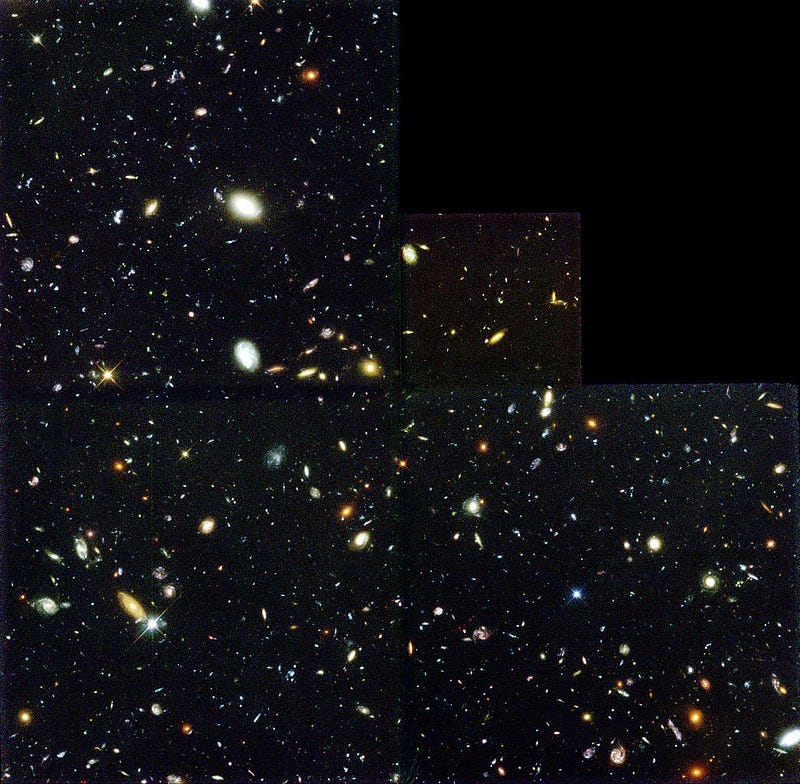
Do you know how remarkable this is? Every point of light in this image that wasn’t one of the five stars identified up top is its own galaxy! We had no idea how deep, how dense, and how full of stuff the Universe is until we took this picture. Do you have any idea how many galaxies are in this image? Any idea — in less than 0.002 square degrees — how many galaxies there are?
Well, let’s just take 8% of this image, blown-up, of course, so you can count.
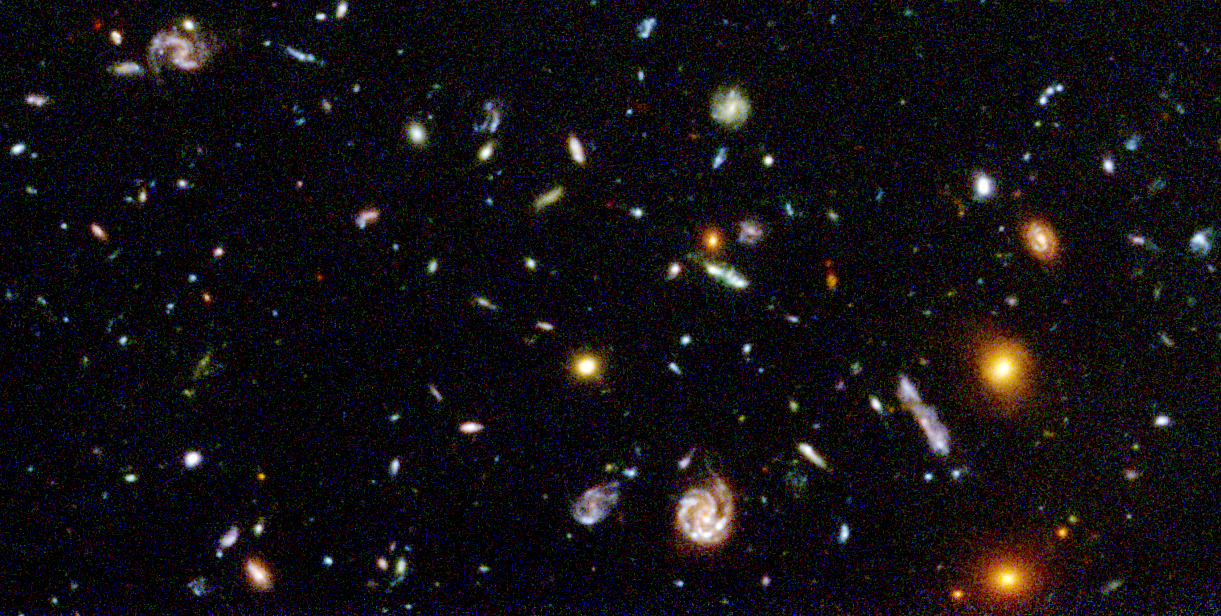
And remember, every single blob, blur, or distant luminous dot is a galaxy! There’s about 350 of them in this image, according to my counts, more or less. If we do the math and extrapolate this to the entire night sky in both hemispheres (about 40,000 square degrees), we get that there are 10^11 galaxies in the Universe, or 100,000,000,000 galaxies!
For the first time, we had confirmation that there are at least a hundred billion galaxies in our Universe.
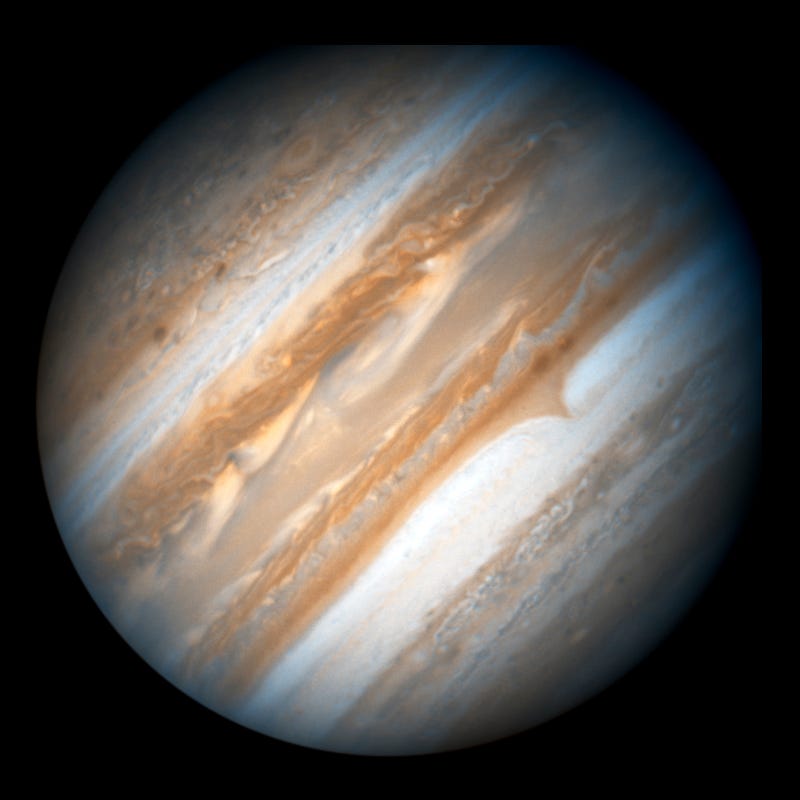
2.) Jupiter, the largest planet in our Solar System. Sure, it’s a beautiful sight, and Hubble can provide us with amazing views of its bands, its great red spot, and even its closest Moon, Io, actively erupting.
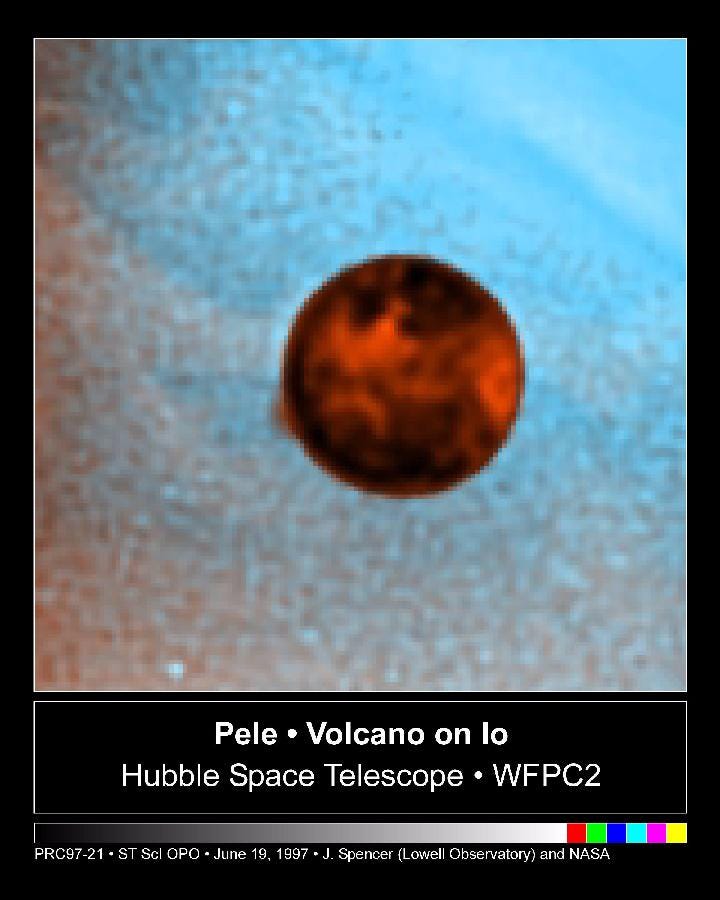
But by far the greatest thrill — and the greatest thing it ever saw on that front — was born of pure serendipity. In 1994, Hubble imaged Jupiter getting hit by a comet!

First it observed the comet fragmenting (above), then it observed the multiple impact sites on Jupiter (below), which poked holes all the way through the massive, swirling clouds!
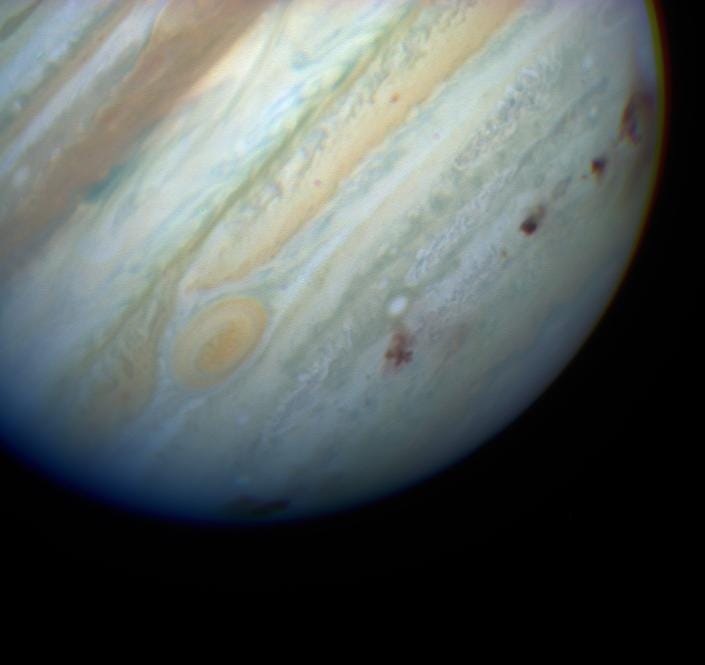
The only better images we’ve ever gotten from Jupiter have come from physically going to Jupiter.
And yet, there are more wondrous things that Hubble has done.
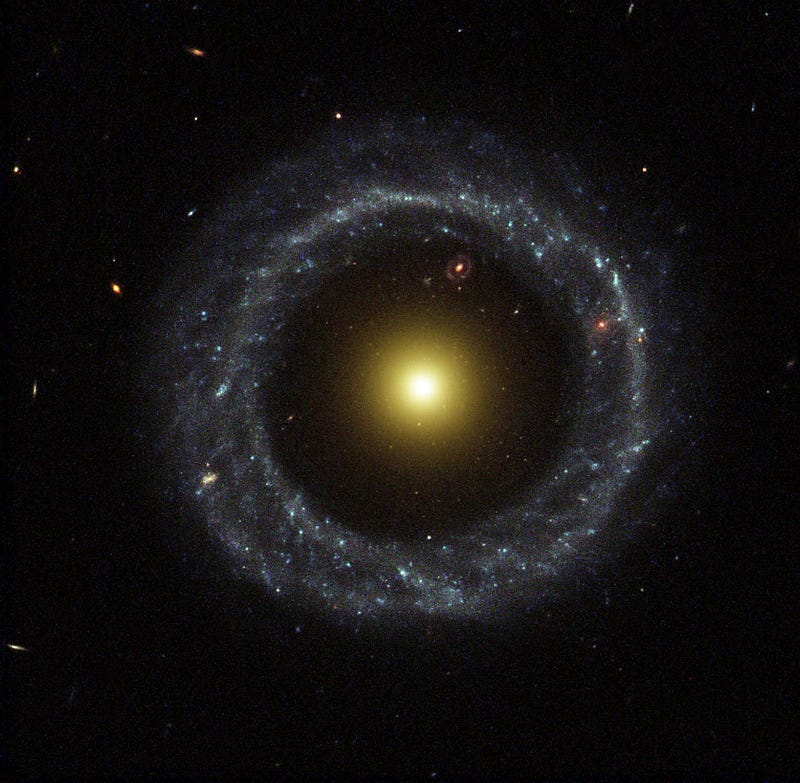
3.) Not just spirals and ellipticals, but Hubble takes a crazy image of an ultra-rare “ring” galaxy. There are two theories as to what makes a ring galaxy, and they both seem reasonable.
- Accretion: an infalling galaxy (or any amount of matter) can get torn apart by a massive galaxy, and accreted into a circular ring around it. These definitely exist, as they are the only explanation for Polar-Ring galaxies. But there may be a second type.
- A ripple from a collision: a massive galaxy might pass through the center of another massive galaxy. The ripple of matter and gas that moves outwards could trigger star-formation around the ripple. This theory has been around since the 1970s, but there was never incontrovertible evidence for it.
That is, until Hubble (with WFPC2, of course) snapped this photo.
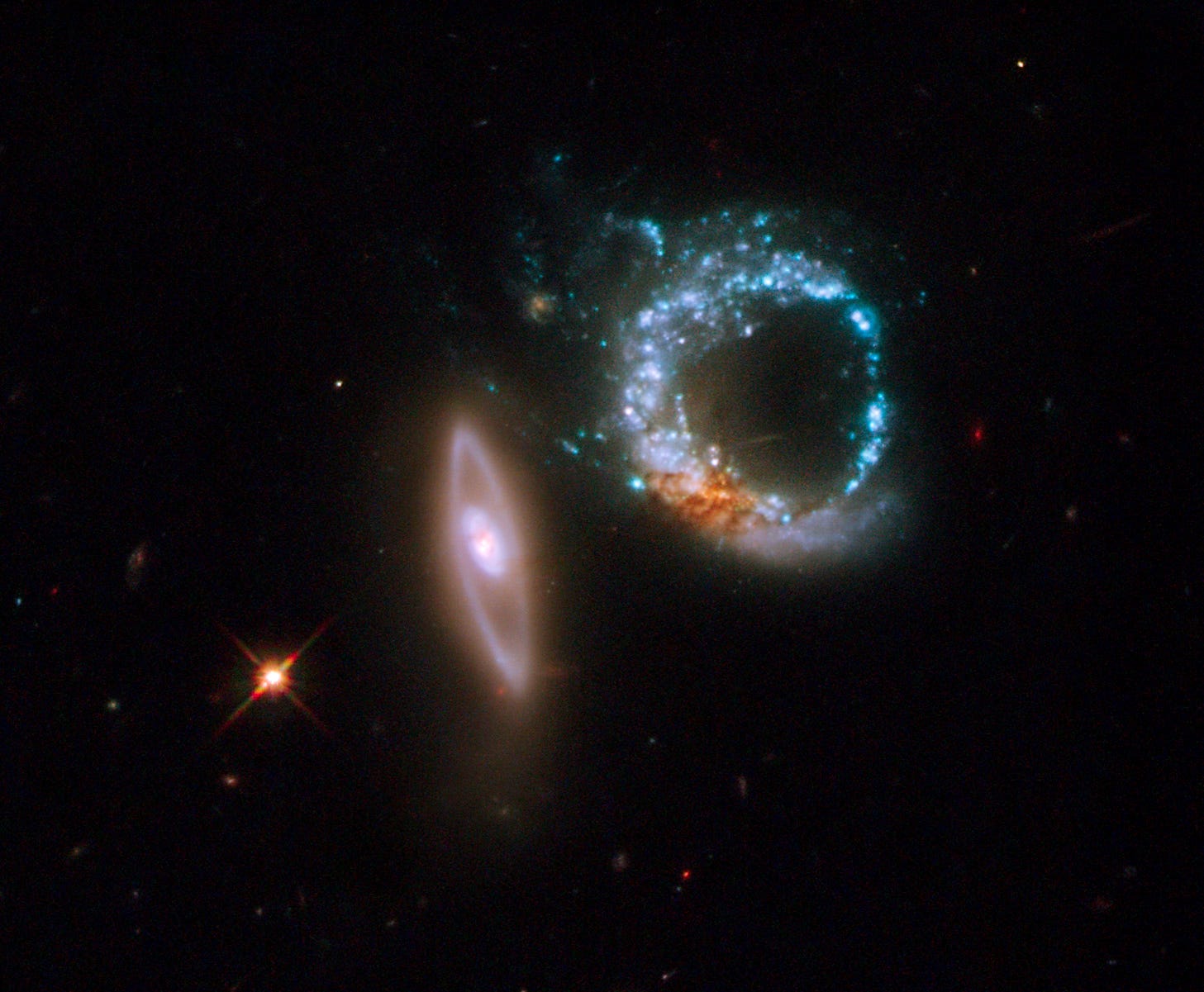
Say hello to Arp 147, the only known pair of gravitationally interacting galaxies where both of them have rings! Based on their motion, we can tell that they’re moving away from each other and they’re the same distance away from us.
This means that they’ve just collided, and since they both have rings, this tells us that the ripple of star-formation is happening in both galaxies! It’s the only time we’ve ever observed this for two galaxies, and we owe it all to Hubble!
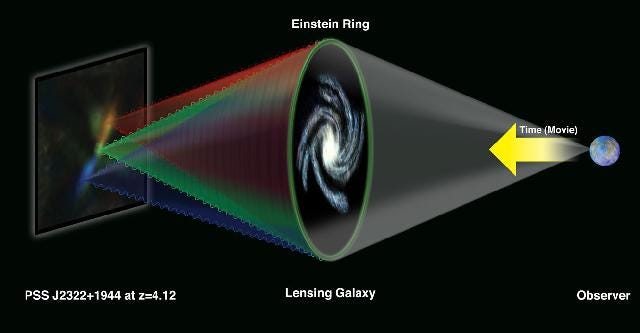
4.) Gravitational lenses. Once in awhile, we get very lucky in the Universe. Instead of looking out and seeing a galaxy or a cluster of galaxies, we have two or more galaxies or clusters that are all aligned with one another. When this happens, the galaxy or cluster in the middle acts like a lens and can both magnify and distort the image of whatever’s behind it.
In theory, you’re supposed to get arcs of the lensed images that are magnified and either stretched or present in multiple images. In practice, this is very difficult to do, because of how faint these distant objects are and how susceptible they are to atmospheric distortion. Here’s what “gravitational lensing” looked like before-and-after the Hubble Space Telescope.
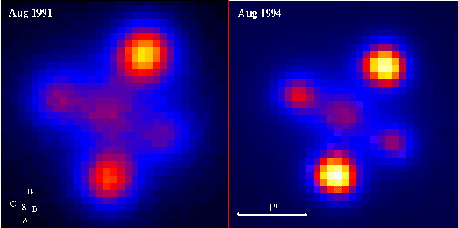
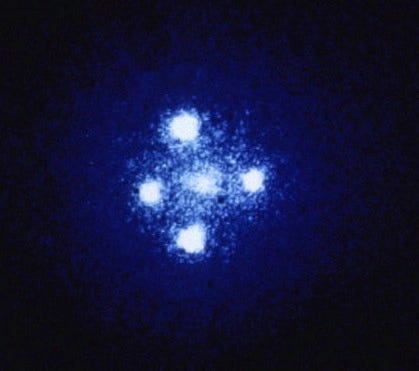
If the image on the right a disappointment, it should be! It’s barely better than what we see from the ground. But that’s a Hubble image from 1990, before the repairs and before the new camera.
Thanks to WFPC2, a huge number of gravitational lenses — multiple images, arcs and great magnification — were found.
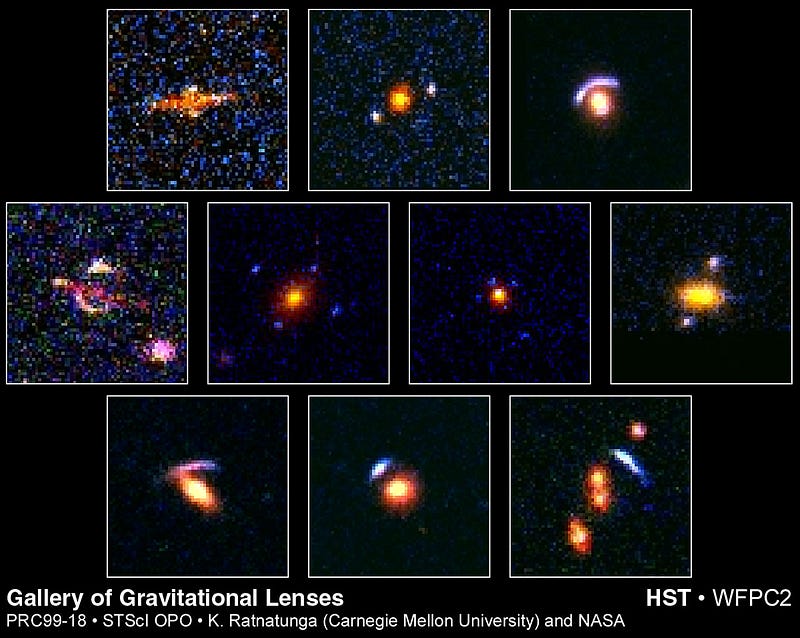
But it gets even better. When you look at a cluster, sometimes you get lucky, and there are galaxies (or even other clusters) directly behind it. These background galaxies can show up as lensed images. You see those blue arcs, that look like they trace out part of a circle? Those are the same few galaxies, stretched and shown multiple times. Because of the high resolution of Hubble with WFPC2, they were able to pull out which images were of the same galaxy, and reconstruct resolutions down to less than one arc-second, or 1/12,960,000 of a square degree!
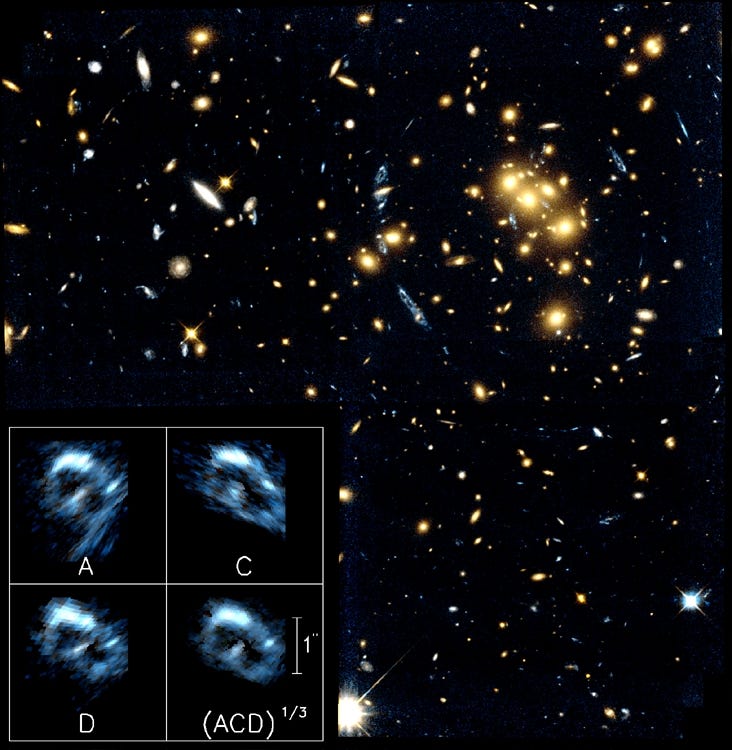
Someday soon, we’ll be able to use this technique to determine how much the various light paths are time-delayed, since when a transient event occurs in this background galaxy — like a supernova — it will appear at four different times in each image!
And finally…
5.) Stars: how they are born and how they die. Perhaps no other tool, ever, has been more useful for discovering how stars are born and how they die than WFPC2. Many stars, at the end of their lives, blow off their outer layers, creating a bright planetary nebula that lives for about 10,000 years.
The Hubble Space Telescope with WFPC2 took a look at the Cat’s Eye nebula about 15 years ago, making it the first planetary nebula imaged with the new optics and WFPC2. The results?
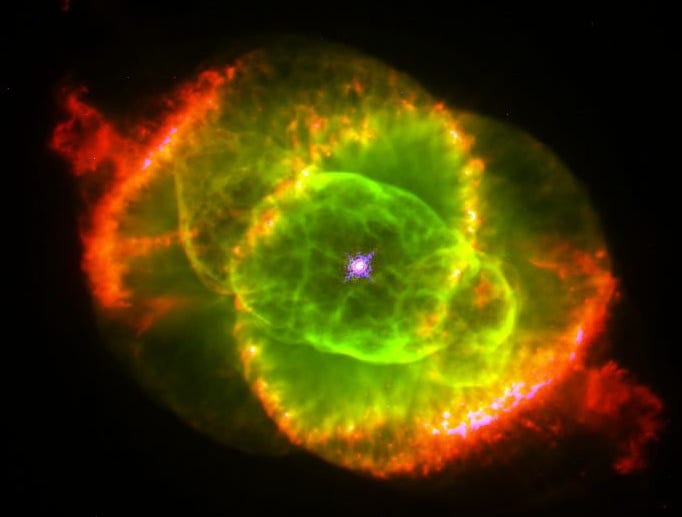
Seriously. Is there anything to say other than holy crap?! But it gets better. You see, these things completely litter the Milky Way. We can do an estimate; there are around 400 billion stars in our galaxy, each star lives roughly 10 billion years, which means about 40 stars die per year. This means that, at any given time, there are about 400,000 planetary nebulae in our galaxy. There are a few spectacular ones that WFPC2 has caught, such as the Hourglass Nebula:
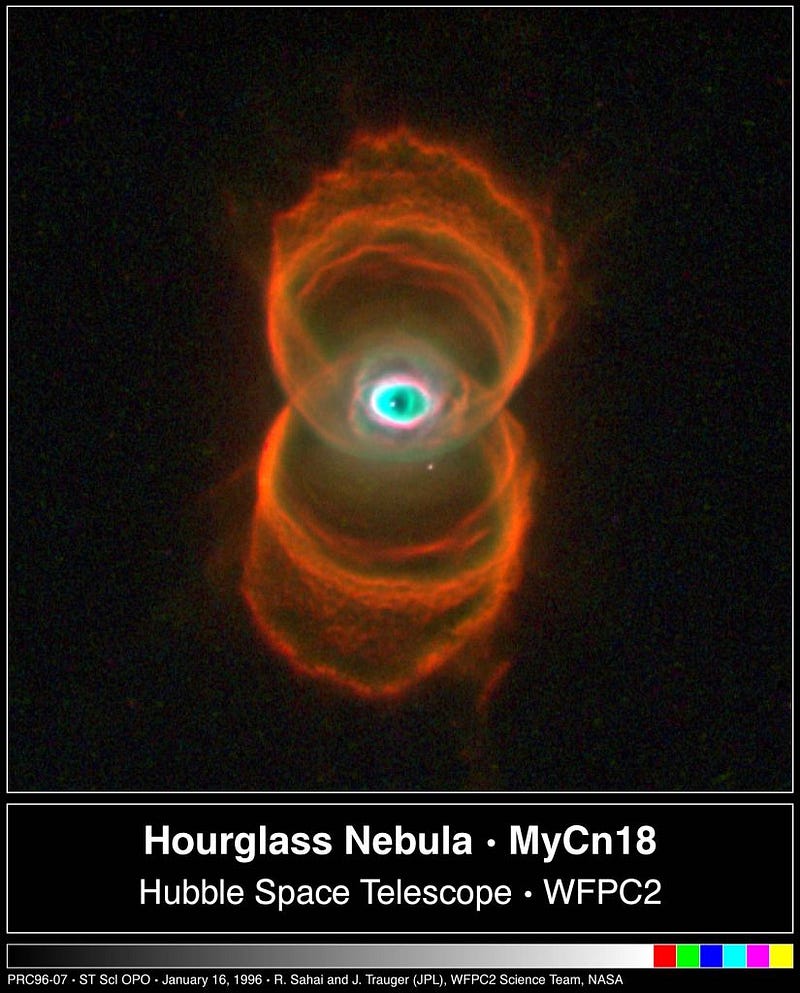
The Hubble 5 nebula:
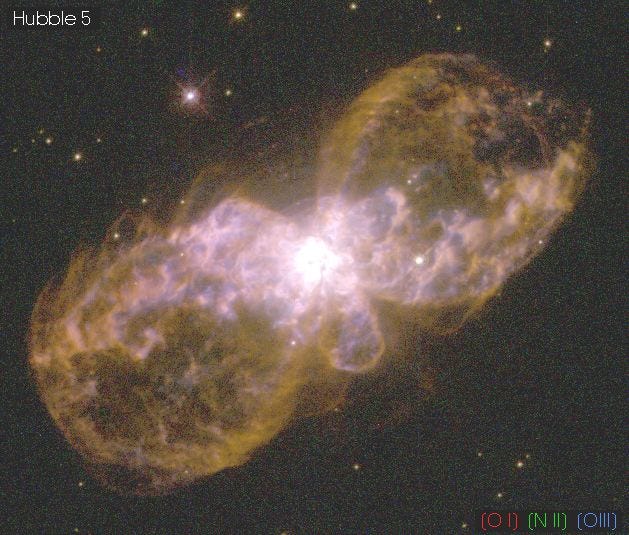
And the nebula Mz3, known as the “Ant Nebula.”
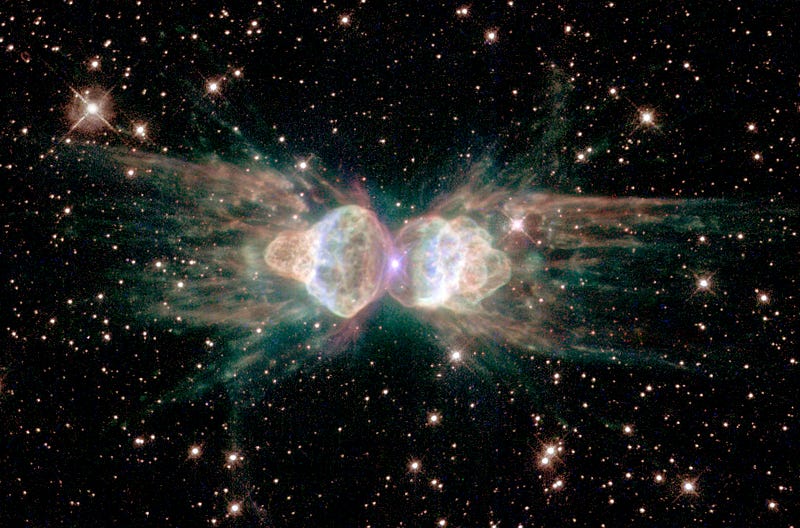
And so this camera has taught us a lot about how stars die. But what it’s also told us about is how and where they’re born! You see, these nebulae don’t just dissipate after a few thousand years; they often spit out entire star systems worth of gas, and trigger the formation of new stars. One of the most spectacular pictures took place deep inside the Eagle Nebula.
And when Hubble imaged the pillars at the center of it, it was one of the most amazing things ever.
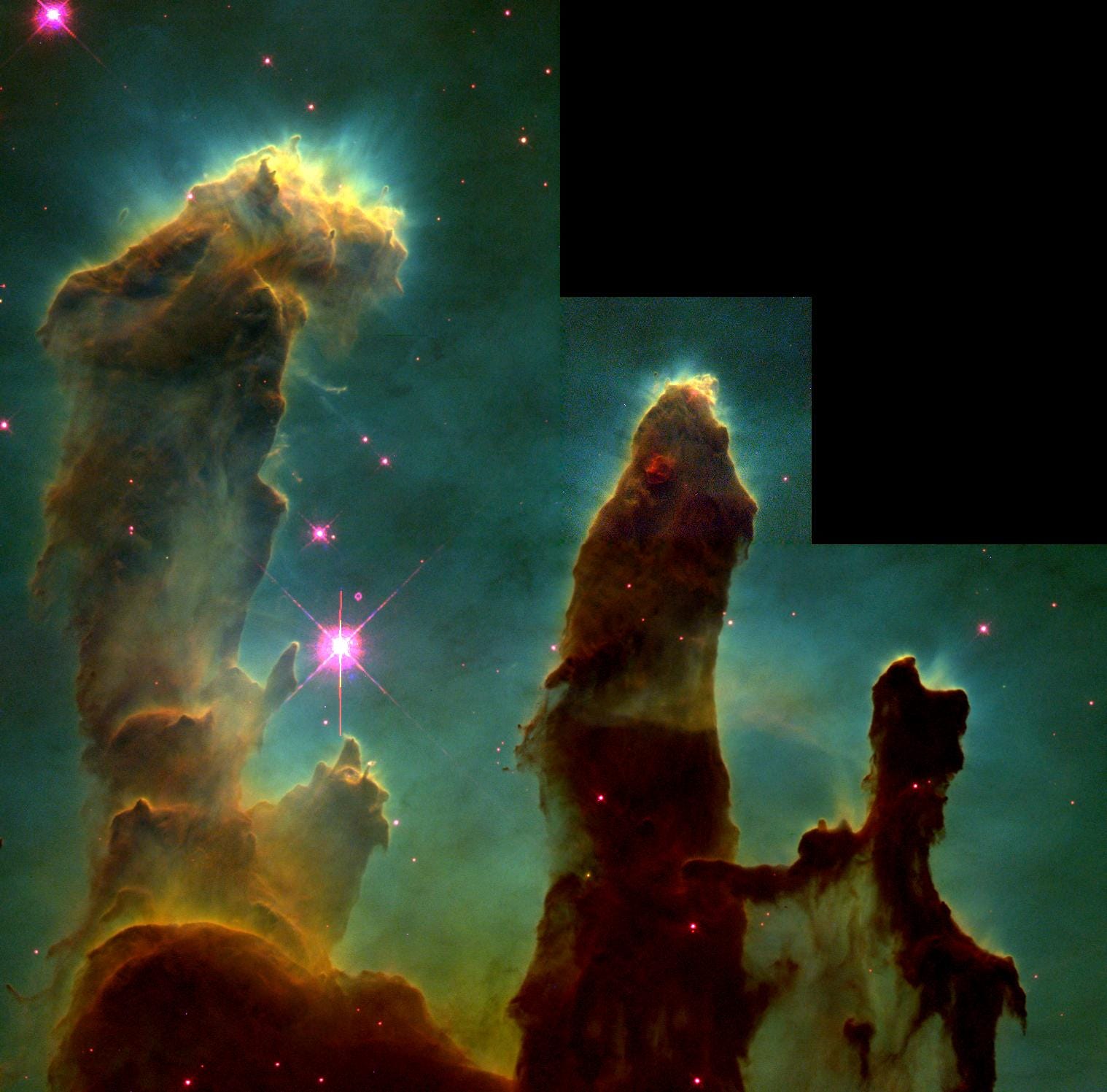
And so in all these different ways, the WFPC2 camera totally changed our view of the Universe!
But I don’t want you to think this is the end; in 2009, it was replaced with Hubble’s final servicing mission. And in practically all ways imaginable, what we have now is far superior. From the latest eXtreme Deep Field, which goes practically twice as deep as the first one:
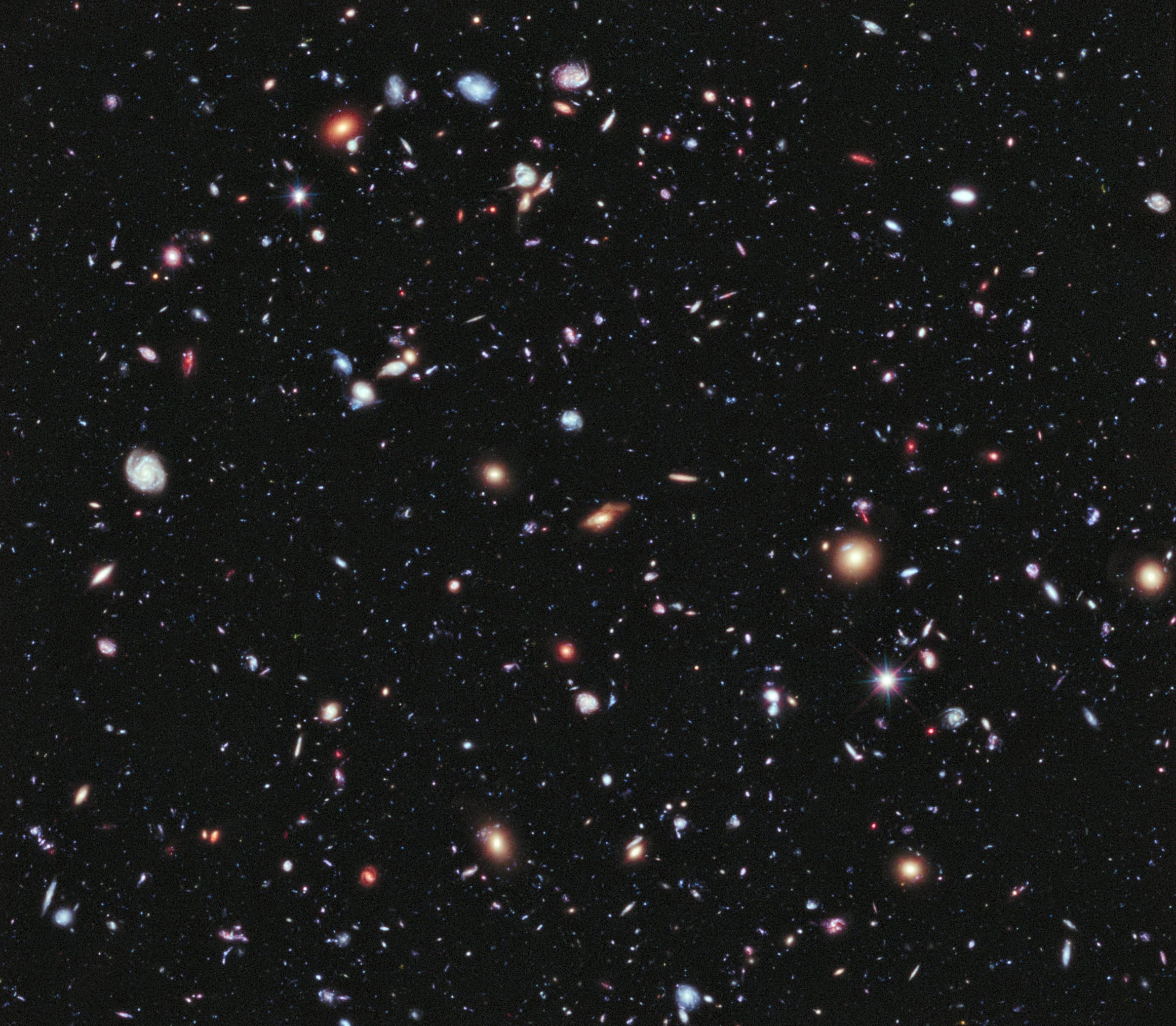
To galaxies in details we’d never imagined:
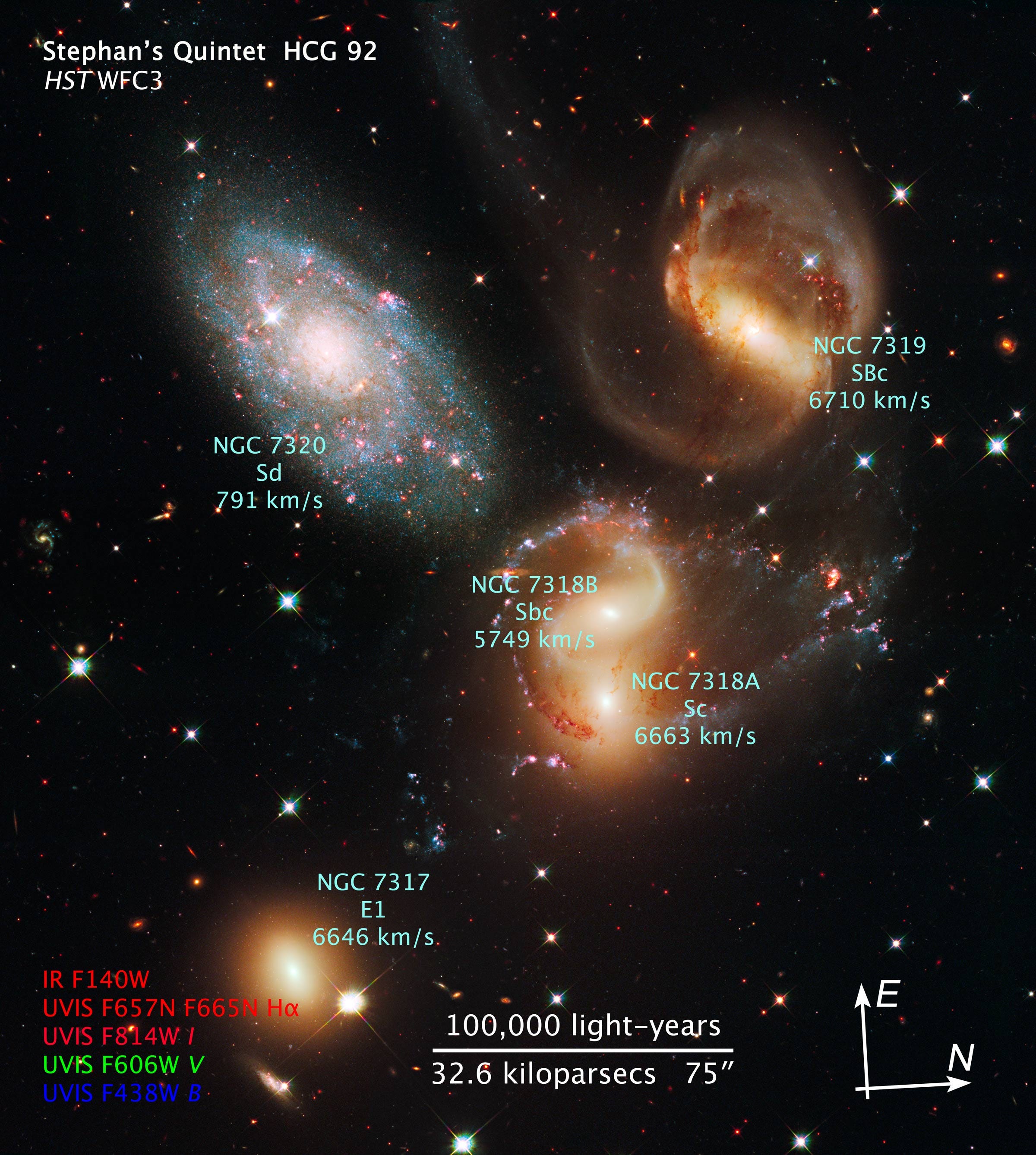
To the planetary nebulae of dying stars:
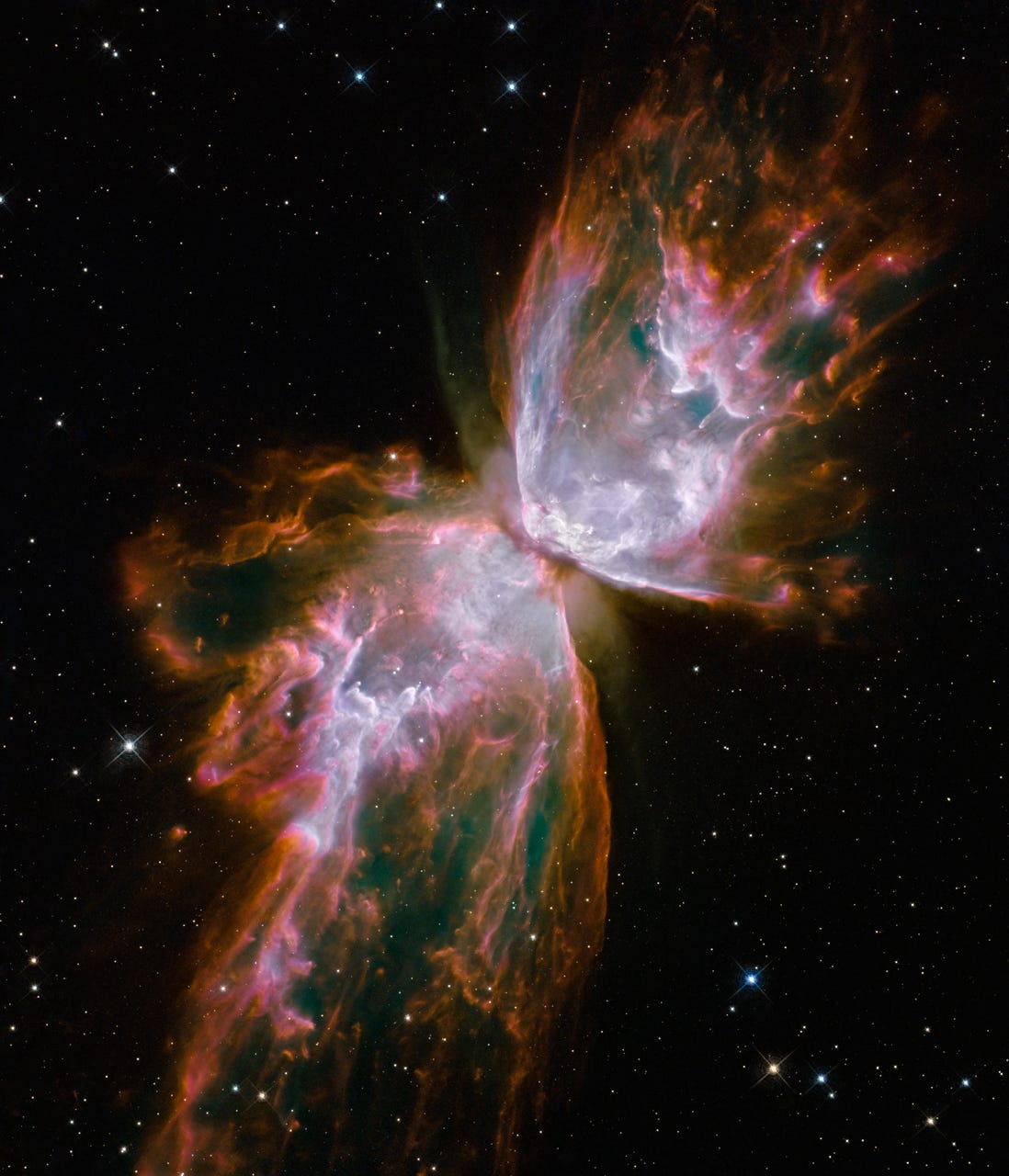
To gravitational lenses that you never could have imagined:
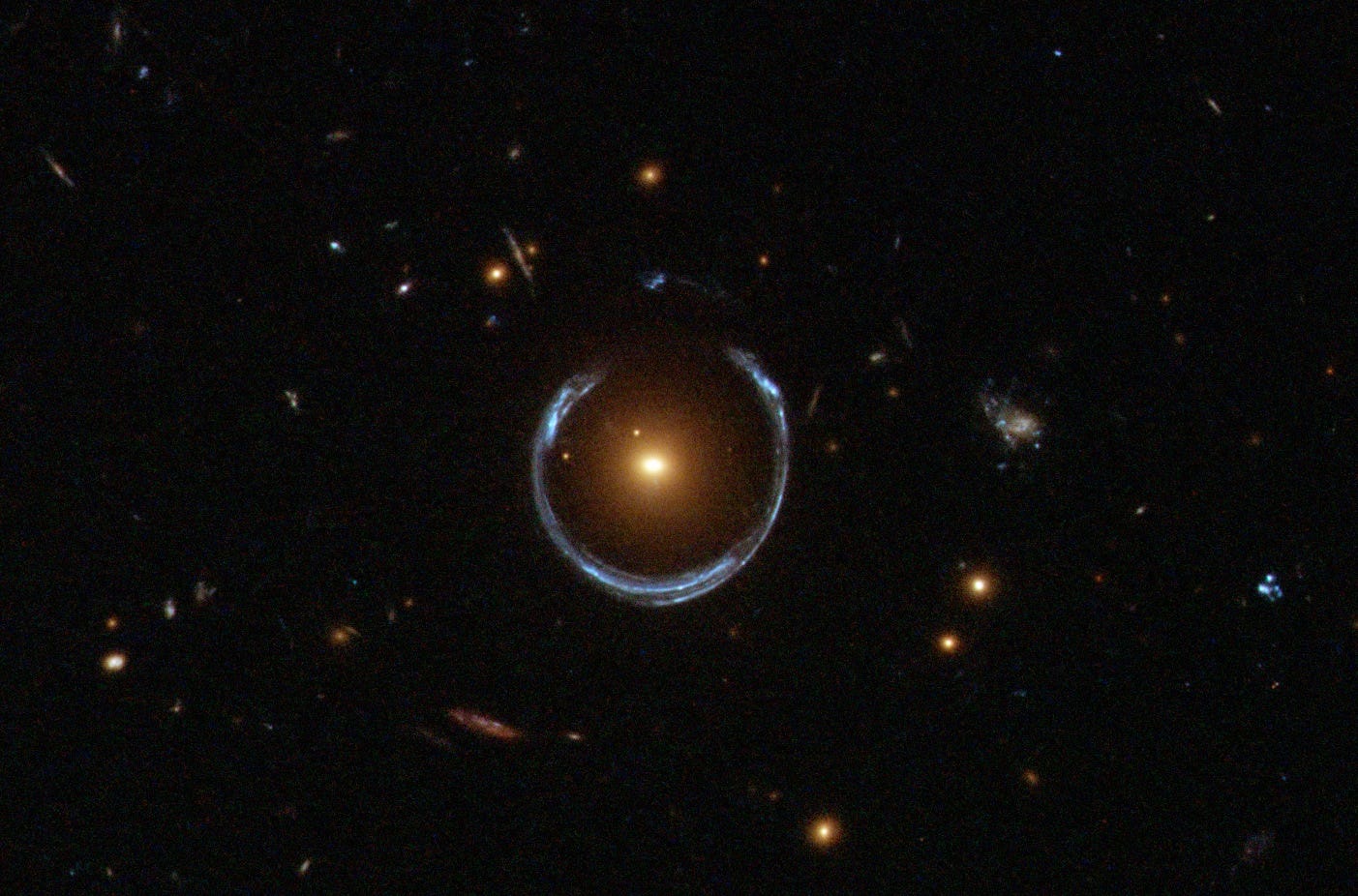
And finally, to an even greater image of the pillars of creation than you’d dare to dream of.
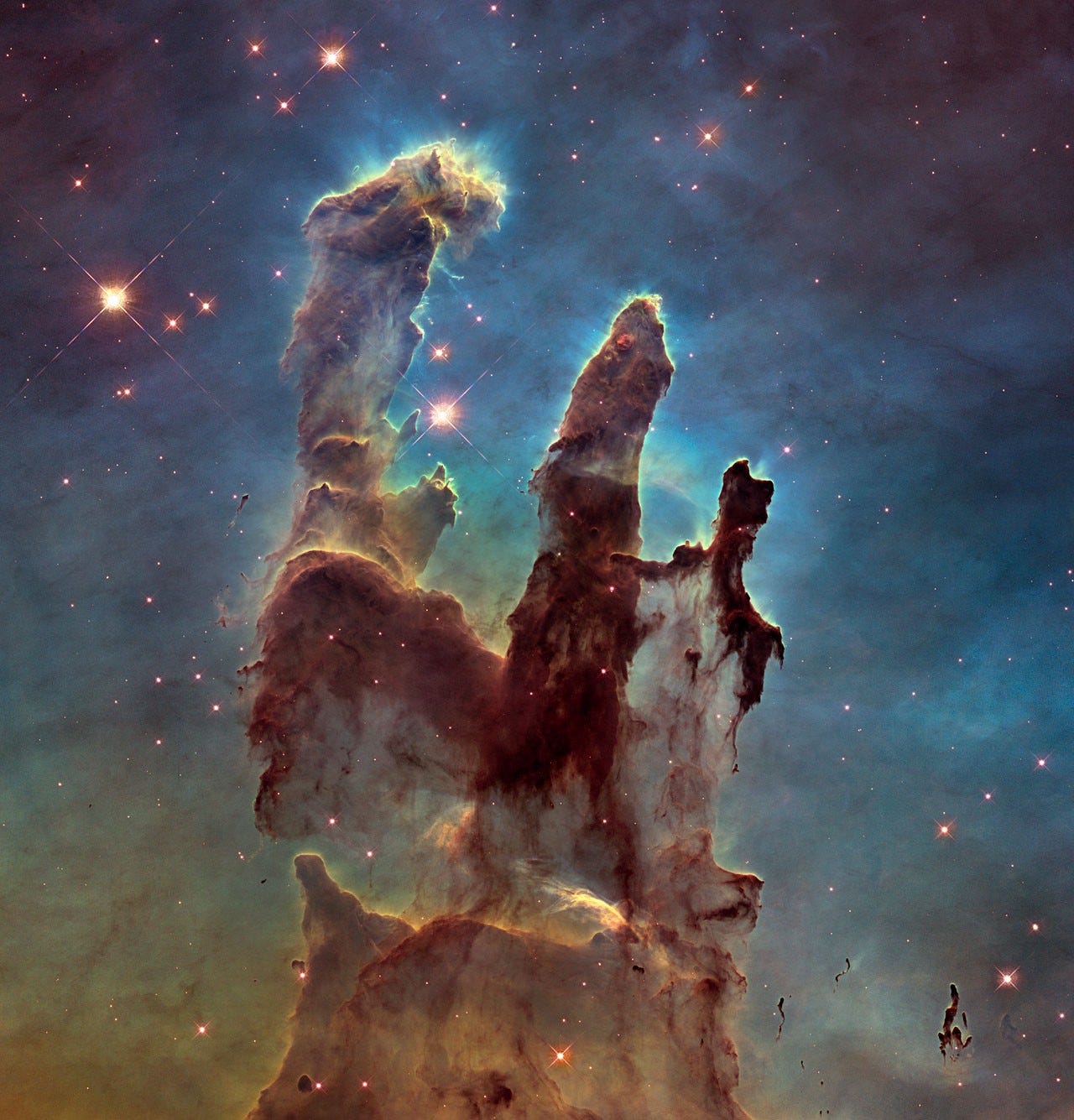
So don’t just have a look back at the amazing science we’ve done and how the Hubble Space Telescope has changed our view of the Universe forever; look forward to what we’re doing now and what new wonders might be in store.
The Universe is all ours. All we need to do is look.
Leave your comments at the Starts With A Bang forum on Scienceblogs!



